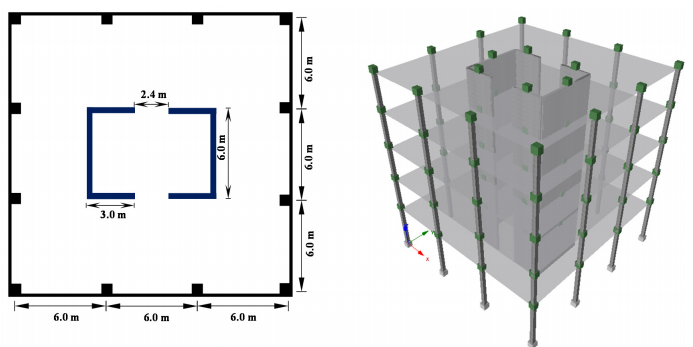Hosseinzadeh, Shadman1; Aly, Nader2; Ashour, Ahmed3 and Galal, Khaled4
1 PhD student, Dept. of Building, Civil & Environmental Engineering, Concordia University, Montréal, Québec H3G 1M8, Canada. E-mail: shad_hos@encs.concordia.ca
2 PhD student, Dept. of Building, Civil & Environmental Engineering, Concordia University, Montréal, Québec H3G 1M8, Canada. E-mail: n_aly@encs.concordia.ca
3 Post-Doctoral Fellow, Dept. of Building, Civil & Environmental Engineering, Concordia University, Montréal, Québec H3G 1M8, Canada. E-mail: eng.ahmed3ashour@gmail.com
4 Professor, Dept. of Building, Civil & Environmental Engineering, Concordia University, Montréal, Québec H3G 1M8, Canada. E-mail: galal@bcee.concordia.ca
ABSTRACT
Reinforced Masonry Shear Walls (RMSW) are commonly used in low- to medium-rise buildings as the seismic force resisting system. Since the 20th century, several experimental and analytical studies have been conducted to evaluate the seismic response of RMSW component and system (i.e. building consisting of planar walls). However, research on RM core wall systems is scarce, especially concerning the torsional effects on the system’s seismic inelastic response. A core is a structural element with a cellular section that is typically closed on three sides and is either open or partially closed by coupling beams on the forth side. In the current study, a five story building, designed according to the National Building Code of Canada (NBCC 2015) and the Canadian Standards Association (CSA) S304-14, was considered to assess the seismic performance and collapse capacity of RM core wall systems. SeismoStruct software package was used to model the building numerically. The nonlinear model is validated against experimental data of an asymmetric RM building. Collapse risk evaluation has been conducted for reliable design of RM cores within the context of FEMA P-695 by subjecting the mentioned building’s numerical model to various ground motions scaled at different intensity levels. This study is proposing RM Core wall system as a reliable alternative seismic force resisting system. It also contributes to better understanding and quantification of its seismic response and collapse capacity.
087



